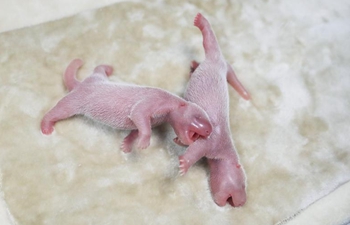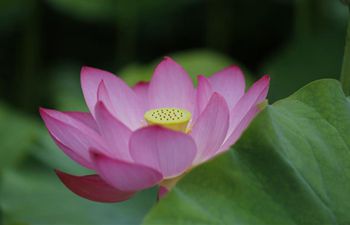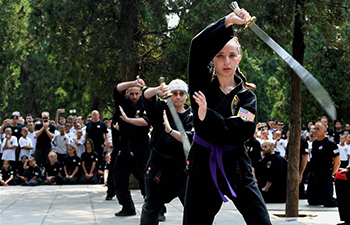WASHINGTON, July 2 (Xinhua) -- American and Chinese scientists discovered that the quality of the rice plant could determine whether a major pest on rice in Asia grew short wings or long wings.
The discovery, reported on Monday in the Proceedings of the National Academy of Sciences, gave scientists a potential tool in engineering ways to fight the pest.
Scientists at Washington State University (WSU) and China Jiliang University found that the wing size of brown planthopper determined whether the insect could fly long distances to other plants or stick around and feed off nearby rice plants.
"It's all about the amount of glucose, or sugar, in the plant," said Laura Lavine, professor in WSU's Department of Entomology.
Over the life of a rice plant, the ratio of sugars to amino acids changes. During the early growth stage, rice plants are a great food source for insects.
These young rice plants have relatively low glucose levels and brown planthoppers don't need to search out a new home, so they develop with short wings and, in females, large ovaries.
"Rice plants with higher glucose levels are older and dying. That increase in glucose causes adolescent brown planthoppers to develop into the long-winged adults," said Lavine.
In this case, young brown planthoppers develop with long wings and small ovaries, preparing to migrate away from the old, less nutritious rice plant in search of better food.
"It's a one-time decision. If the decision to stay and reproduce or migrate and fly away is incorrect, the brown planthopper is in trouble," said Lavine. "Grow short wings when long wings are needed to move away and they die. Grow long wings when they could manage with short wings and they're leaving a healthy food source and have to needlessly search for another home."
The most surprising part for the researchers was having just one factor, glucose, be the sole determining factor.
"It has been difficult to isolate environmental signals that influence insect morphology and behavior," Lavine said. "But it's not for the brown planthopper. The plant's glucose level is the signal on whether they stay or go."
"The results of this study will hopefully allow scientists a new way to figure out how to trick the brown planthopper into developing into the wrong form so that they die before they become pests," Lavine said.
The brown planthopper is one of the most destructive rice pests in the world and threatens the sustainability of rice production and global food security.
















